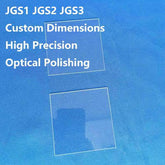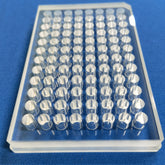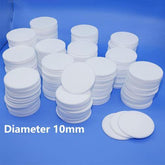What are the reasons for the long polishing time of sapphire windows?
Sapphire windows are primarily utilized in laser, optical instrument, and semiconductor equipment due to their exceptional properties, including high hardness, high temperature resistance, and excellent light transmission. This makes them well-suited for a range of industrial applications, including precision optical windows, sensor protection, and corrosive environment monitoring. Most manufacturers are meticulous in their production processes, particularly in the grinding stage, because any deviation from standard procedure during this stage can result in significant damage to product quality and financial losses.

The grinding process of sapphire windows can be broadly categorized into three stages: rough grinding, fine grinding and polishing. Rough grinding is used to ensure uniformity, while fine grinding is used to achieve a flat finish. The objective of polishing is to ensure that each component of the sapphire window (lens) attains a mirror-like finish. It is evident from these processes that the polishing of sapphire windows is in fact a process of corrosion and purging to reach the ideal state.

In addition, there are a number of reasons why the desired mirror effect might not be achieved following polishing. Firstly, the sapphire window is available in a round or square shape. The square window may be a long strip with four corners incompletely ground. Secondly, the presence of pits on the window is also a consideration. Thirdly, the presence of defects such as orange peel watermarks on the sapphire surface can compromise the aesthetic appeal of the mirror effect. Finally, there is one more point to consider. It is possible that haze or atomization phenomena may be present on the sapphire window surface. The third defect is naturally formed, while the other three are likely to be produced in the early grinding stage, which is also the reason why the sapphire window takes so long to polish. Therefore, the production of sapphire windows should be carried out with greater care in order to create a flawless mirror effect that will meet the expectations of customers.






